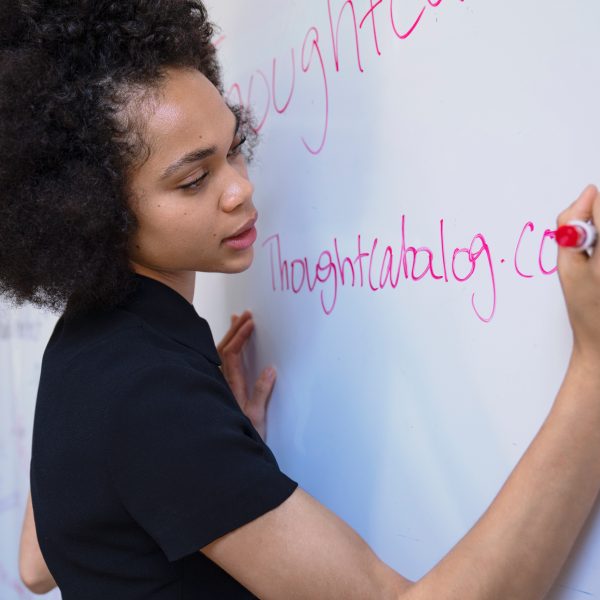Looking beyond children’s interests for child-centred curricula
opinion
The views expressed by contributors are their own and not the view of The Sector.

Children’s interests have long been considered a cornerstone for programming, with the early years learning framework (EYLF) recommending that educators “engage children actively in learning…identify children’s strengths and interests, choose appropriate teaching strategies and design the learning environment”. Early Childhood Teacher and Educational Leader Sarah Riddell unpacks what child-centred programming really means, and how it can transform the way educators program for children’s learning and development.
Reaching an agreed definition
The National Quality Standard (NQS) focuses on child-centred programs within early childhood education services. But, what does this mean to the children at the centre? How does it feel to “be educated” and more importantly, how do educators ensure they have a professional understanding of putting the child at the centre of the programs, environments, experiences and routines they create?
To ‘dive deep’ and really reflect on what child-centred programming means, we need to have an agreed understanding on the term ‘child-centred’, because as with most things in the early childhood context, this can be contextual. Community Child Care has developed a child-centred curriculum which explains the components quite simply.
In essence, to have a child-centred curriculum means educators are required to design play-based learning opportunities for children to demonstrate their current interests, strengths, needs and identities. Yet there can be questions lingering at times as to whether educators see these components beyond face value.
Building authenticity
Take children’s interests for instance. When we notice children have developed an interest in an experience or activity, often our first response is to capture this interest in an image, be it digitally or to store within our own memory. The documentation process that follows is significant in order for educators to demonstrate the origin (child’s interest) of their curriculum decision making. Is this what child-centred curriculum means?
On the surface, yes. The child is at the centre and we are writing about their interest. However, for the curriculum to be truly child-centred, reflection and analysis of the children’s individual dispositions, thoughts, feelings and participations -looking beyond what the eyes see – is required. This then, coupled with intentionality around teaching, environments, routines and experiences, is what makes an authentic child-centred curriculum.
Placing children at the centre of documentation
Australian Children’s Education and Care Quality Assurance’s (ACECQA) guideline on documentation touches on child-centred curricula and challenges educators to see their observation and planning cycle beyond a sequence of evolving events, instead urging educators to “view documentation as an important part of your work”.
The question for many educators when reading the guidance from ACECQA shifts from the ‘was that not what I was doing?’ or the ‘why do we have to document children’s learning?’, to ‘how do I document children’s learning and put the child at the centre?’
Ann Stonehouse, a respected early childhood consultant and leader, said that extending children’s activities was traditionally misinterpreted to mean the same thing as extending children’s learning, when in fact, the two could not be more different. This concept can also be true for describing child-centred learning as well.
With the recent updates to the National Quality Framework, clear guidelines are available to support reflection on this element, for example:
- Make realistic opportunities for families to share information about their child
- Explore children’s individual, unique and diverse identities
- Make opportunities for children to share and bring together their community and world knowledge
- Support children’s decision making.
Culture-centred is child-centred
Prior to the EYLF there was little emphasis on children’s developing awareness of identity and how this presented cross-culturally. Even the term ‘culture’ is enough to put many educators minds into a spin as they move beyond origin and religion as traditional terms for definition.
Culture is an important cornerstone because it is the beginning of how we think, how we feel, and what we believe. Our culture is a direct line into all aspects of our wellbeing and involvement as both an individual and active social citizen, influencing the decisions we make whether we are aware of it or not.
Babies are making judgements on familiar and unfamiliar people, toddlers are noticing boys and girls are different and preschoolers are grouping one another in categories such as hair and skin colour during play-based experiences. These are all real examples when a child’s culture could impact on how they respond to stereotypes, difference and stigma.
Australia is continuing to diversify and the 2016 census showed more than 49 per cent of Australians were born overseas or had a parent who was born overseas. It becomes all the more evident that by knowing the cultural groups children and families belong to, educators have a greater capacity to facilitate learning opportunities for children to explore diversity in safe and respectful environments. In particular, environments that see the family as the child’s first teacher.
Families are children’s first teachers
Child-centred curricula which identify families as children’s first teachers acknowledge that even from the earliest days, their child was learning from their caregivers. They were learning about body language, smiles and laughter. As their child grows older, children watch how their family partake in life, analysing their nutrition, exercise, numeracy and literacy dispositions, and then making judgements on where the world fits in comparison to the conclusions they came to. This influential position highlights why services need to value and see families as paramount to developing a child-centred curriculum.
To bridge this gap, educators can work with enhancing the partnerships principle between services and families to increase the ways in which families can contribute and share information about their child. Often the lack of communication shared from families comes from a feeling that they are not welcome to share their experiences, or not knowing what family experiences are worth sharing. Given that children belong to numerous community groups that sit in line with their developing sense of identity, the role of open and honest relationships between families and educators can not be more clear.
Ask more questions and get more answers
So what does this mean for educators? What do they need to be doing/thinking about/acting on, as they journey towards an authentic, child-centred curriculum?
To start seeing a deeper perspective on child-centred curriculum educators need to ask more questions about the children’s interests, strengths, knowledge, culture and abilities.
This could be through assessing the child’s learning at the end of each individual observation. If you were to complete this analysis, some questions to prompt your assessment could include:
- What might this child be thinking? For babies this could be present through their non-verbal cues such as smiling, turning away, frowning or the sounds they make. If a baby is smiling after a bubble flies past, you could assume that they are delighting in that bubble, Wondering what it is. Questioning its origins. Fascinated in the science of the colours it reflects.
- What knowledge do they have already? What other skills or experience is being transferred and used as utilities to explore a new experience? If a child has knowledge to hold a nail in the middle or bottom instead of the top, do they know this because they have hit their thumb before?
- Where did this knowledge come from? Is it innate or environmentally influenced? How did they acquire this perspective on the world and reapplied it in a new context?
- What concepts of power does the child explore within this disposition?
Alternatively, previous analysis on children’s learning and development can be used as a tool for collaborative reflection amongst educators in a workplace-learning environment. This may be an option for your service if you have questions like:
- How do I know whether my program truly sits in line with the children’s changing needs and interests?
- How do we transfer our knowledge on our children beyond the experiences in which they participate?
- How do our children engage in long, sustained periods of play?
- How are theories on early childhood development and learning represented in our play environments?
- In what way are these theories transcribed into our documentation processes?
By creating an authentic child-centred curriculum, services are adding immense value to the children, families and educators who participate within their program. By working with families to gain deeper understandings on the multiple ways their children experience belonging and being, children have a greater capacity to experience a program that enhances their learning towards becoming the best version of themselves in the future.
Popular

Workforce
Policy
Quality
Practice
Provider
Research
ECEC must change now, our children can’t wait for another inquiry
2025-07-02 07:47:14
by Fiona Alston

Events News
Workforce
Marketplace
Practice
Quality
Provider
Research
An exclusive “Fireside Chat” with ECEC Champion Myra Geddes
2025-07-01 11:25:05
by Fiona Alston

Workforce
Practice
Provider
Quality
Research
Supporting successful transitions: Big moves, big feelings
2025-06-26 11:00:30
by Fiona Alston












